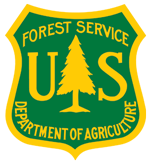-
 Webinar: Environmental Justice - Climate Impacts, Adaptation, and Resilience
Webinar: Environmental Justice - Climate Impacts, Adaptation, and Resilience
-
Located in
Resources
/
Background on equity and inclusion
-
Rio Grande National Forest Adaptation Workshop
-
There is an increasing need to consider the anticipated effects of climate change on ecosystems and identify management actions that respond to these changes. This workshop will support participants from the Rio Grande National Forest in determining which climate impacts are of greatest concern to them, and identify management opportunities for adapting to change. The Adaptation Workbook provides a structured process for integrating climate change considerations into management planning and activities.
Located in
News & Events
-
 American Black Duck Decision Support Tool
American Black Duck Decision Support Tool
-
The Atlantic Coast Joint Venture Black Duck Decision Support Tool (DST) helps to identify the exact number of acres to protect, restore or maintain at the small watershed scale. Through this tool, land managers can determine the best way to contribute to achieving black duck goals anywhere on the landscape.
Located in
Research
/
Peer-reviewed Science
-
 Introduction to the Climate Change Vulnerability Assessment Research Project
Introduction to the Climate Change Vulnerability Assessment Research Project
-
Climate change adaptation and mitigation strategies are dependent on the best available projections of how climate will change and impact a region’s natural and cultural resources. Understanding the vulnerability of various species and habitats within the Appalachian LCC to climate change is of critical importance. Identifying the most appropriate steps to acquire climate vulnerability information and then using this information to inform adaptation and mitigation strategies is a major research priority of the LCC.
Located in
Vulnerability
-
 Climate Change Vulnerability Previous Habitat Assessments
Climate Change Vulnerability Previous Habitat Assessments
-
Research compiled the results of habitat assessments from five previous research projects. These include two projects in the Central Appalachian and Cumberland - Southern Appalachian portion of the LCC; habitat assessments completed in the North Carolina portion of the Cumberland - Southern Appalachian subregion; habitat assessments in the northeastern portion of the Central Appalachian subregion; and a draft assessment for a habitat in the Interior Low Plateau.
Located in
Vulnerability
-
Where does global warming go during La Niña?
-
People have started to ask us whether all these La Niñas could offset global warming. The short answer is no, La Niña is no match for global warming.
Located in
News and Webinars
-
 Climate Change Impact: Food Systems, Food Security, and Global Linkages
Climate Change Impact: Food Systems, Food Security, and Global Linkages
-
Food systems both impact and are affected by climate change. Emissions come not only from farming, but also from the processing, manufacturing, distribution, storage, sale, and preparation of food, and the disposal of food wastes. Likewise, climate change influences not just agriculture, but activities that occur throughout this larger system. In this talk, Dr. Peters will address the fundamental concepts of food systems and food security. He will explain how scientists estimate climate emissions from individual supply chains and from whole food systems. He will also consider case study examples of strategies for reducing emissions viewed both from the production and consumer ends of the food system.
Located in
News and Webinars
/
Webinars
-
 New Study Uses FIREX-AQ Data to Link Aerosol Properties to Wildfire Smoke
New Study Uses FIREX-AQ Data to Link Aerosol Properties to Wildfire Smoke
-
Atmospheric aerosols are effective at scattering light and causing reduced visibility, and the extent to which this process occurs can be linked to overall aerosol concentrations and human health impacts. Measurements taken during the Fire Influence on Regional to Global Environments and Air Quality (FIREX-AQ) campaign provide a record of this aerosol light scattering during the 2019 wildfire season in the western U.S.
Located in
Resources
/
Climate Links
-
 Study: Subseasonal Forecasts Provide a Powerful Tool for Protecting Whales
Study: Subseasonal Forecasts Provide a Powerful Tool for Protecting Whales
-
Effective management of marine mammal populations threatened by man-made impacts is particularly challenging for marine environments. Not only are these environments highly dynamic and difficult to observe, previous static management approaches have proven problematic or ineffective in marine environments, particularly for highly migratory species or for species undergoing distributional shifts due to climate change.
Located in
Resources
/
Climate Links
-
 Tribal Nation Boundary Feature on Drought Maps
Tribal Nation Boundary Feature on Drought Maps
-
NIDIS, in partnership with NOAA's National Centers for Environmental Information, has launched a new map customization feature for Tribal Nations on the Drought.gov. This feature allows users to display reservation boundaries on any map on Drought.gov.
Located in
Resources
/
Climate Links























